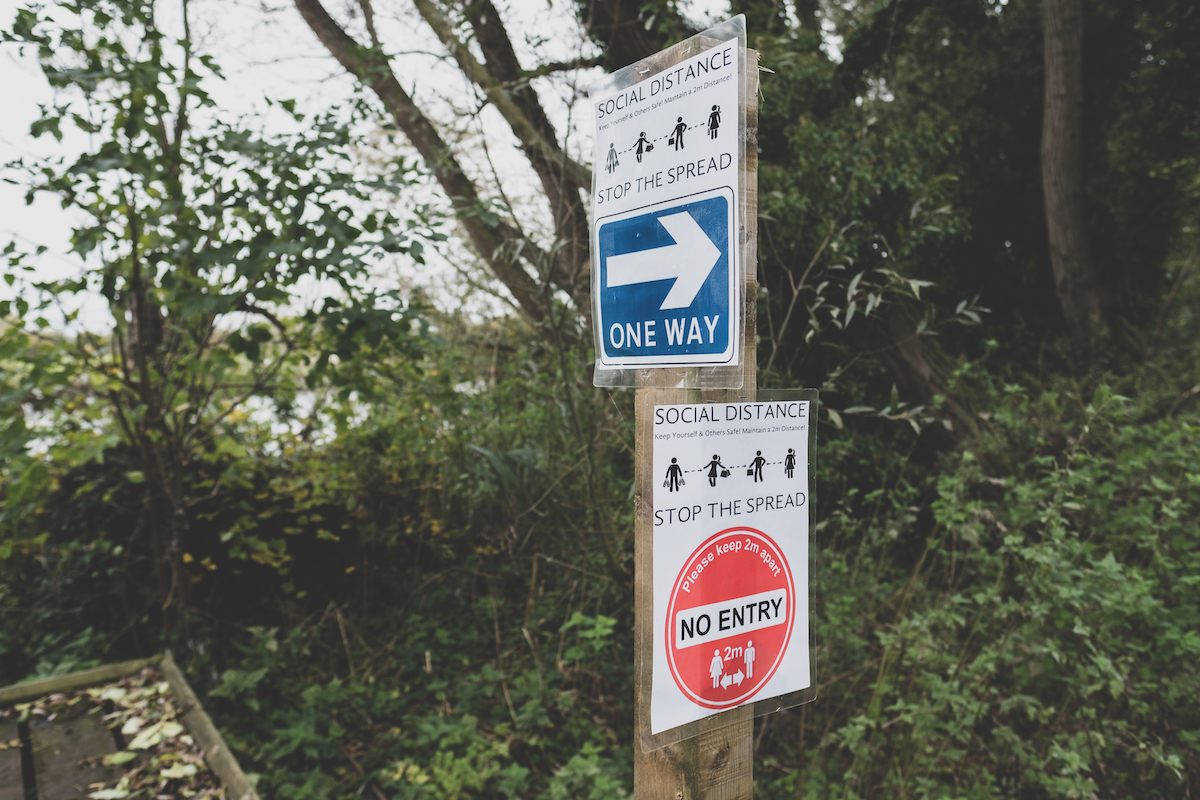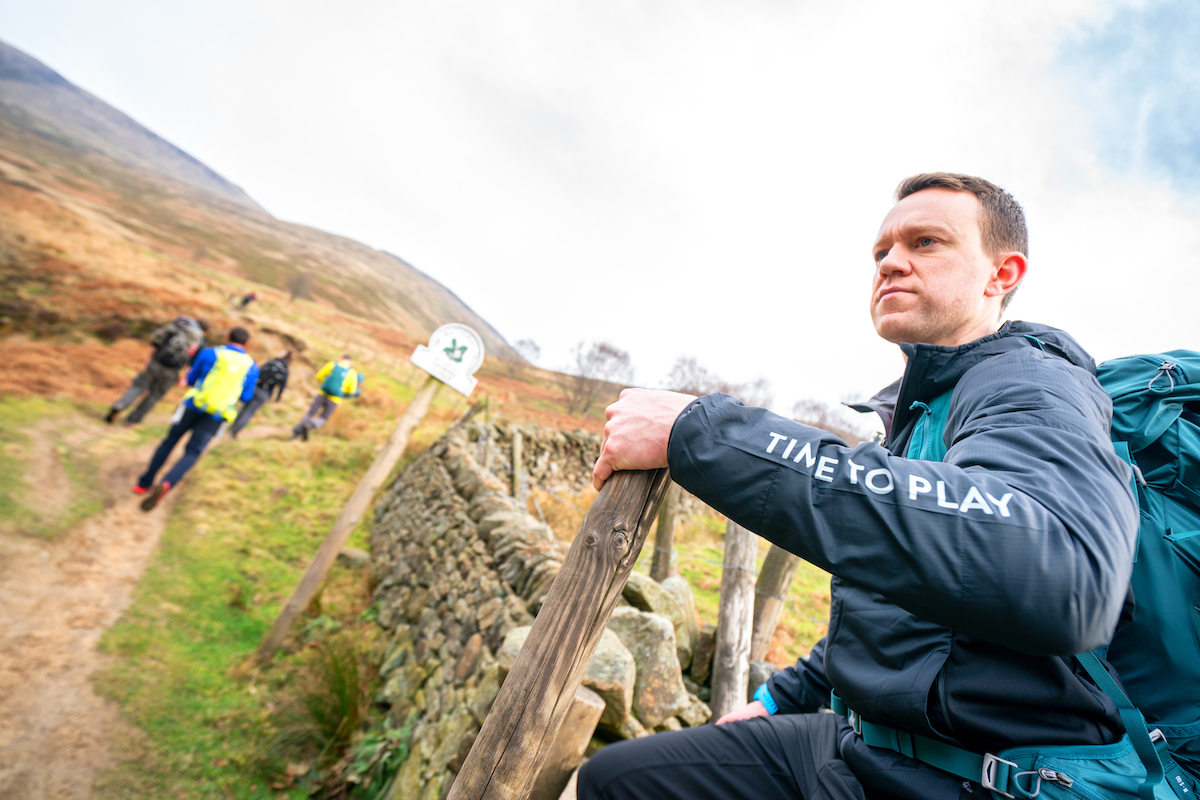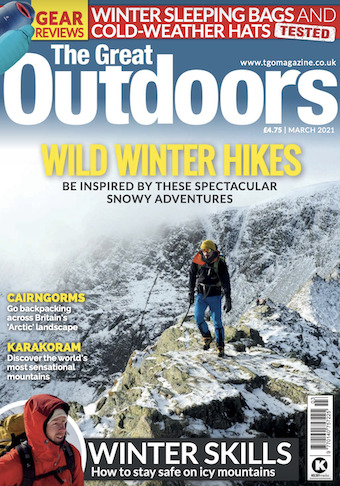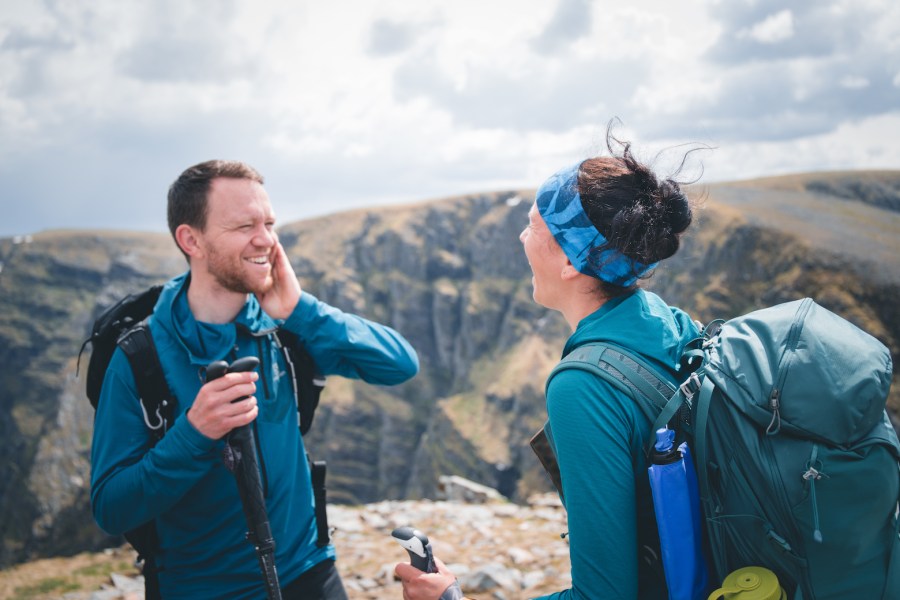Are there many documented cases of coronavirus transmission outdoors? What’s the risk of contracting the disease from a gate, or a passing walker? We ask a virologist some key questions.
Lockdown means the hills and mountains are off-limits to many of us right now – but we can still exercise locally, which for many of us happens in places where we pass others in the street, in parks, or in local countryside.
But how easily does the virus actually transmit outdoors? Dr Müge Cevik is a virologist based at St Andrews University and a member of the government’s New and Emerging Respiratory Virus Threats Advisory Group (NervTag). She has been studying the transmission of the virus over the course of the pandemic. Here’s her take on what the science says.
Header image: Conversations outdoors are riskier than passing contact – but overall risk in outdoor environments is much lower than indoors. Photo: Edward Fitzpatrick
As I understand it, your research has shown that not all settings are equal when it comes to COVID-19 transmission?
It’s important not to confuse being exposed to someone infected and becoming infected yourself. Not all exposure will lead to infection. When we look at the overall international and UK data, only about 6 per cent of people who have had contact with someone with COVID-19 develop the infection. Meaning, not all exposures will lead to infection. And overall, the risk of getting infected is much, much higher in an indoor setting. If you are exposed to someone with COVID-19 indoors – particularly for a prolonged time without adequate ventilation and you’re breathing the same air as other people – the risk of you being infected is much higher than it would be outdoors.
Are there many proven cases where someone has contracted coronavirus in an outdoor setting?
There is one really expansive review looking at infections that might have occurred in an outdoor setting, but generally those occurred either through prolonged and close contact – so being less than two metres away from someone and spending a long time together – or in settings where people mixed in both an indoor and an outdoor setting (such as having dinner in a garden but also mixing together inside). These make up about 10 per cent of overall infections. Infection risk is far, far higher when close contact is involved. That means having a face-to-face conversation for 15 minutes or spending time with someone in an indoor setting with no ventilation.

Social distancing signs in a UK park. Photo: Shutterstock
So going for a walk with a friend, for instance, puts you at a greater risk of infection than just passing somebody in a park?
It is important to emphasise that risk is a spectrum, so every interaction will create some risk, which will never be zero or 100%. Duration and proximity are both very important. Walking side by side and talking with someone for 40 minutes is not the same as walking past somebody. Virus level is also important. When you have prolonged contact, even outside, you will be exposed to more virus overall.
If you’re in a crowded environment – for instance a busy park – what steps can you take to reduce the risk of contracting COVID-19?
First of all, the risk is really low – even if it’s a really busy park – because there’s so much going on outdoors. Normally a viral particle has to fly through the air, land on a mucosal membrane such as your mouth or eyes and then pass through multiple layers of mucosal defences. The chances of that happening outdoors are very low. If you’re in a really busy urban environment where you’re maybe passing one person every 10 seconds then the most important thing is trying to keep your distance. The biggest risk is droplets, which means that close contact (less than 2 metres) is the main risk factor outdoors. If you can’t socially distance then masking would be an option – but masks are much more efficient in an indoor setting.
If you walk past somebody such as a jogger or a cyclist, the risk is generally minimal because the interaction is so brief. We need to keep the focus on where the majority of infections happen, which is indoors.
Does the increasing prevalence of new, more infectious variants make outdoor transmission more likely?
No. The variants may be more transmissible, but the physics have not changed. Exposure happens in the same way – droplets are not moving faster. There was a lot of speculation that maybe the new variants cause people to have higher levels of virus in their throat, but there’s a new study showing that’s not the case. So it might be to do with increased receptor binding. If anything, indoor risk is now much higher and that is now where have seen many more infections. Overall, though, brief outdoor contact is not something to worry about. It’s very low risk.
What’s the risk of contracting coronavirus from stiles and gates?
The biggest risk is droplets transmission, particularly outdoors, because the virus doesn’t stay infectious for long in an outdoor setting. We do know that virus survival is generally prolonged in cold weather, but getting infected by only touching surfaces is still very unlikely. We have no case like that. However, I’d generally recommend keeping up hand hygiene – not necessarily being obsessed, but overall using hand gel and washing your hands regularly.

Getting infected through only touching surfaces, like stiles, is thought to be unlikely. Photo: James Forrest
What’s your view on travelling for outdoor exercise, provided you’re not car sharing?
I wouldn’t like to comment on the law regarding where you can and can’t exercise, but car sharing is really high risk because you’re spending time in a really confined space together. There are some cases where household members actually got infected in the car, not in the household, because you have so much more space in a house.
My view is that we need to explain to people how infection happens and where the real risk is, and then they can make informed decisions – and, as I’ve said, risk of transmission outdoors is minimal, unless you spend prolonged time without social distancing.
Useful links: guidance and law on outdoor exercise for hillwalkers
We encourage all walkers and outdoor enthusiasts to follow applicable lockdown law and guidance. Here are some useful links:
- British Mountaineering Council guidance for walkers and climbers in England
- Mountaineering Scotland guidance for walkers and climbers in Scotland
- British Mountaineering Council guidance for walkers and climbers in Wales
- Ramblers advice on coronavirus for walkers across the UK
 Subscribe to The Great Outdoors
Subscribe to The Great Outdoors
The Great Outdoors is the UK’s original hiking magazine. We have been inspiring people to explore wild places for more than 40 years.
Through compelling writing, beautifully illustrated stories and eye-catching content, we seek to convey the joy of adventure, the thrill of mountainous and wild environments, and the wonder of the natural world.
Want to read more from us?
- Get three issues of the magazine for £9.99, saving 30% with free UK home delivery.
- Take out a full subscription at just £15 for your first six issues.
- Order the latest issue and get it delivered straight to your door for no extra cost.
- Catch up on content you may have missed by buying individual back issues with free postage and packaging.







